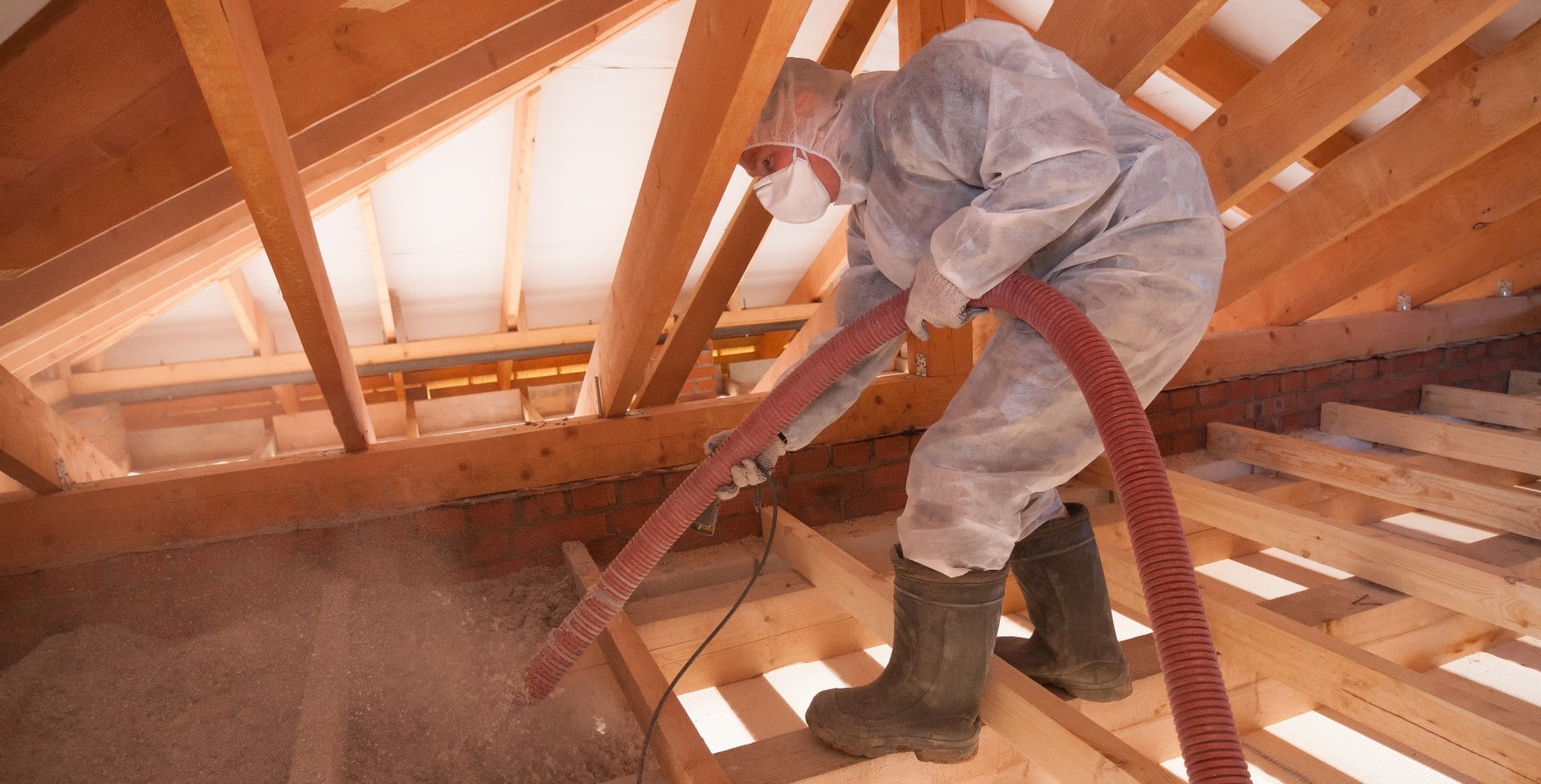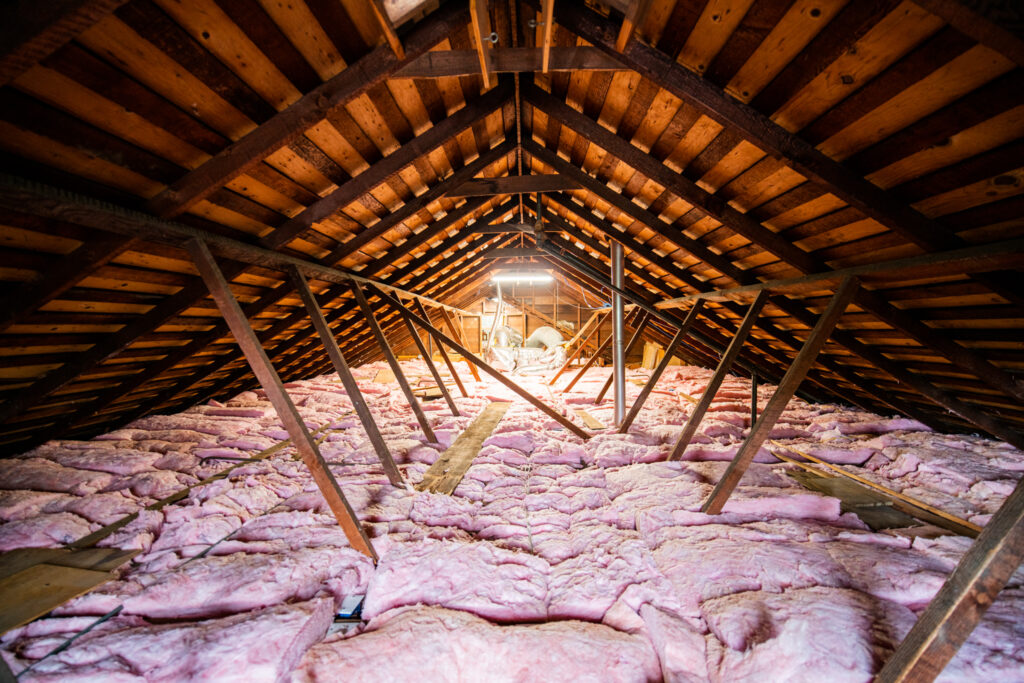Optimize Your Energy Savings with Expert Attic Insulation DFW Solutions
Optimize Your Energy Savings with Expert Attic Insulation DFW Solutions
Blog Article
Discover the Various Sorts Of Attic Insulation and Their One-of-a-kind Benefits for Your Home's Energy Performance

Fiberglass Insulation
Fiberglass insulation is one of the most commonly utilized products for attic insulation due to its superb thermal performance and cost-effectiveness. Made up of small glass fibers, this product properly traps air, producing a protecting barrier that helps maintain constant interior temperature levels. Its high R-value per inch makes it specifically effective at withstanding warmth transfer, which is important for energy conservation in homes.
Installation of fiberglass insulation is relatively simple, typically readily available in batts or loose-fill kinds, suiting different attic configurations. Furthermore, it is resistant and non-combustible to moisture, lowering the danger of mold advancement. This resilience contributes to its durability, making fiberglass a viable long-lasting financial investment for property owners.
In addition, fiberglass insulation is commonly manufactured from recycled materials, which improves its eco-friendliness. The product can also contribute to soundproofing, reducing sound transfer in between areas. While it is important to wear safety gear throughout installment to stay clear of irritation from the fibers, the general benefits of fiberglass insulation, including power financial savings and ecological factors to consider, make it a prominent option for improving attic performance and advertising a comfy living atmosphere.
Spray Foam Insulation
Spray foam insulation is a highly efficient option for attic insulation, recognized for its premium air securing and thermal performance. This innovative insulation product is made up of a blend of isocyanate and polyol resin, which, when combined, expands rapidly to load spaces and tooth cavities in the attic room. Its capability to stick to various surfaces guarantees a constant obstacle versus air leakages, substantially lowering warmth loss throughout cooler months and warmth gain during warmer seasons.
One of the essential benefits of spray foam insulation is its high R-value per inch, which means it provides exceptional thermal resistance in a reasonably thin application. This is specifically useful in attic rooms where space is frequently minimal. Furthermore, spray foam can help lessen moisture buildup, decreasing the risk of mold and mildew and mildew growth, which can be detrimental to both the structure and interior air quality.
While the first cost of spray foam insulation might be higher than typical choices, its long-term power cost savings, coupled with boosted convenience and improved home value, make it a worthwhile financial investment for homeowners looking for boosted energy effectiveness. Attic Insulation DFW. Overall, spray foam insulation sticks out as an effective option for optimizing attic room insulation
Cellulose Insulation

Cellulose insulation is a prominent choice for attic room insulation, mostly composed of recycled paper items treated with fire retardants. This eco-friendly option is recognized for its exceptional thermal performance, efficiently minimizing heat transfer in both summer season and winter season. The dense composition of cellulose enables it to load spaces and voids in attic room areas, providing a smooth obstacle against air leakages.
Among the significant advantages of cellulose insulation is its ability to withstand mold and mildew and insects, owing to the fire resistant therapies utilized throughout manufacturing. Furthermore, it boasts a high R-value per inch, which converts into premium energy performance. Home owners can anticipate reduced heating and air conditioning expenses as an outcome of improved insulation.
Setup is normally achieved via blowing loosened cellulose into the wanted area, you can find out more enabling for a reliable and fast procedure. This technique additionally reduces disturbance to the existing framework. Additionally, cellulose insulation has a fairly reduced ecological influence, as its manufacturing procedure makes use of recycled products, adding to lasting structure techniques.
Rock Wool Insulation
Amongst the various choices for attic insulation, rock woollen, additionally understood as mineral woollen, stands out as a result of its outstanding thermal and acoustic efficiency. Made from all-natural or recycled materials, rock wool is created by melting rock and rotating it into fibers, causing a product that provides excellent insulation homes.
One of the substantial benefits of rock wool insulation is its high R-value, which suggests its performance in standing up to warm flow. This particular not only enhances energy effectiveness but additionally adds to maintaining a comfortable interior temperature level year-round. Additionally, rock wool is inherently fireproof, making it a safer choice for homes as it can endure high temperature levels without melting or releasing hazardous fumes.
In addition, rock wool insulation succeeds in soundproofing capabilities, properly minimizing noise transmission between areas and from outdoors sources. This makes it a perfect selection for property owners looking for a tranquil living setting. Additionally, rock wool is moisture-resistant, aiding to prevent mold development and preserving the architectural stability of the attic room. go to my blog On the whole, rock wool insulation provides a thorough option for improving power effectiveness, security, and convenience in property setups.
Glowing Barrier Insulation
Glowing obstacle insulation functions as an efficient remedy for lessening warmth transfer in attic rooms, particularly in warmer environments. This kind of insulation works by showing convected heat far from living areas, therefore reducing the amount of warm that enters a home during hot weather condition - Attic Insulation DFW. Usually composed of an extremely reflective material, such as light weight aluminum foil, radiant barriers are installed in attics, dealing with the roofing, where they can obstruct inbound warmth from the sunlight
The key benefit of radiant barrier insulation is its ability to reduced cooling prices. By reflecting heat instead of absorbing it, glowing obstacles can aid maintain an extra secure indoor temperature, decreasing the work on a/c systems. This effectiveness converts into lower energy bills and enhanced comfort for homeowners.
In enhancement to energy financial savings, radiant obstacles can additionally add to enhanced indoor air high quality. By reducing warmth buildup, they aid decrease humidity levels, which can avoid mold and mildew growth and enhance general air flow. When installed properly, radiant obstacle insulation can be an important addition to any kind of energy-efficient home, making it a deserving factor to consider for homeowners wanting to improve their attic room insulation technique.
Final Thought
In conclusion, comprehending the numerous types of attic insulation-- fiberglass, spray foam, cellulose, rock woollen, and radiant barriers-- makes it possible for home owners to make educated choices relating to power performance. By selecting the proper insulation material, considerable decreases in power costs can be achieved, along with enhancements in interior convenience.

In verdict, understanding the numerous kinds of attic insulation-- fiberglass, spray foam, cellulose, rock woollen, and radiant obstacles-- makes it possible for home owners to make enlightened choices pertaining to power effectiveness.
Report this page